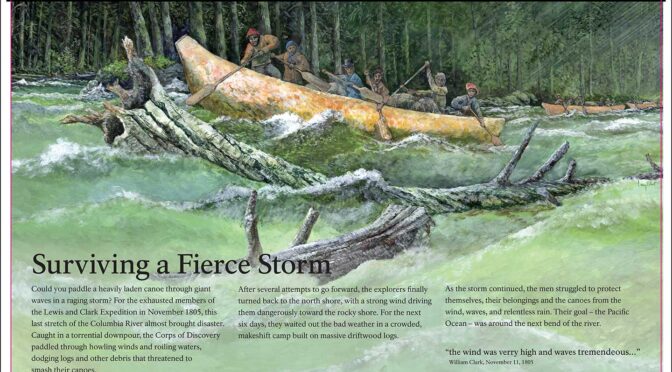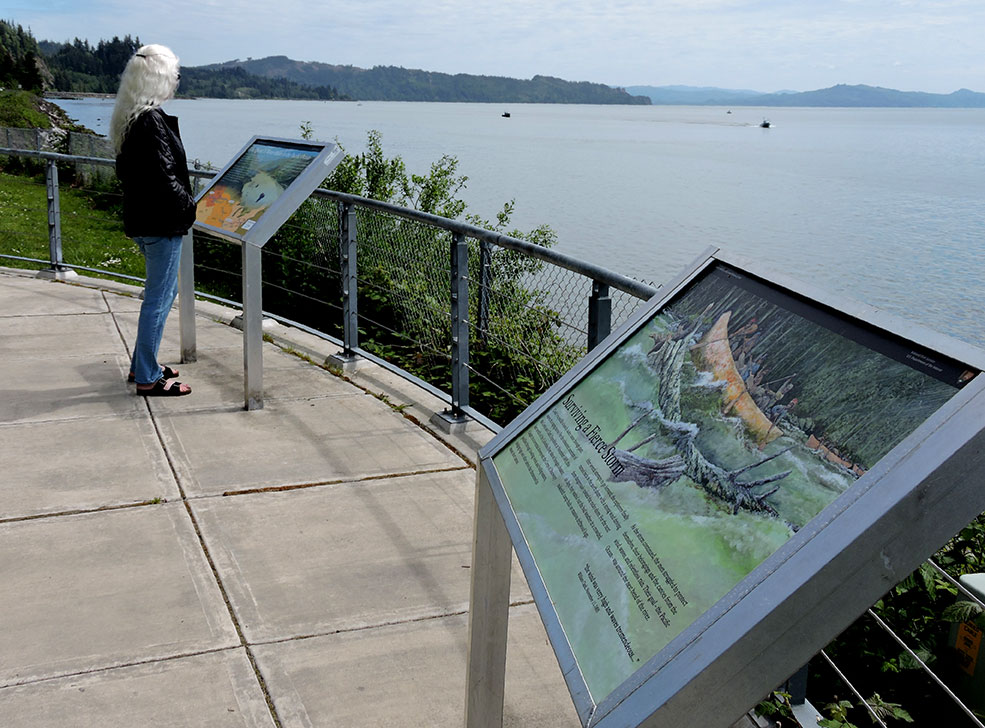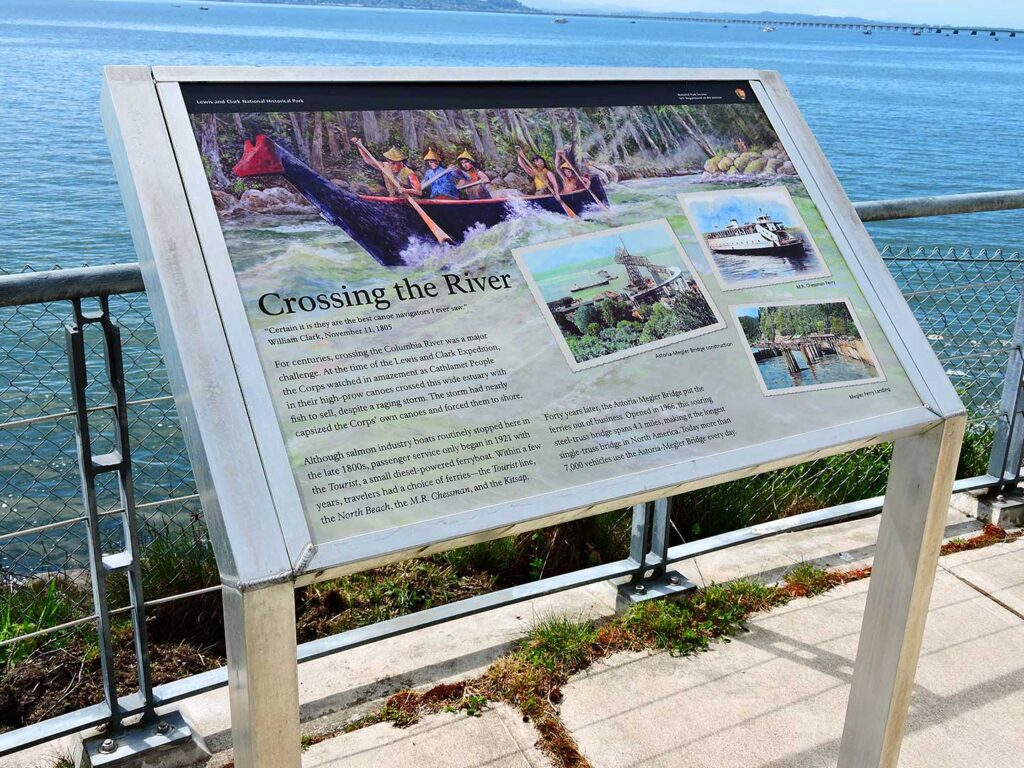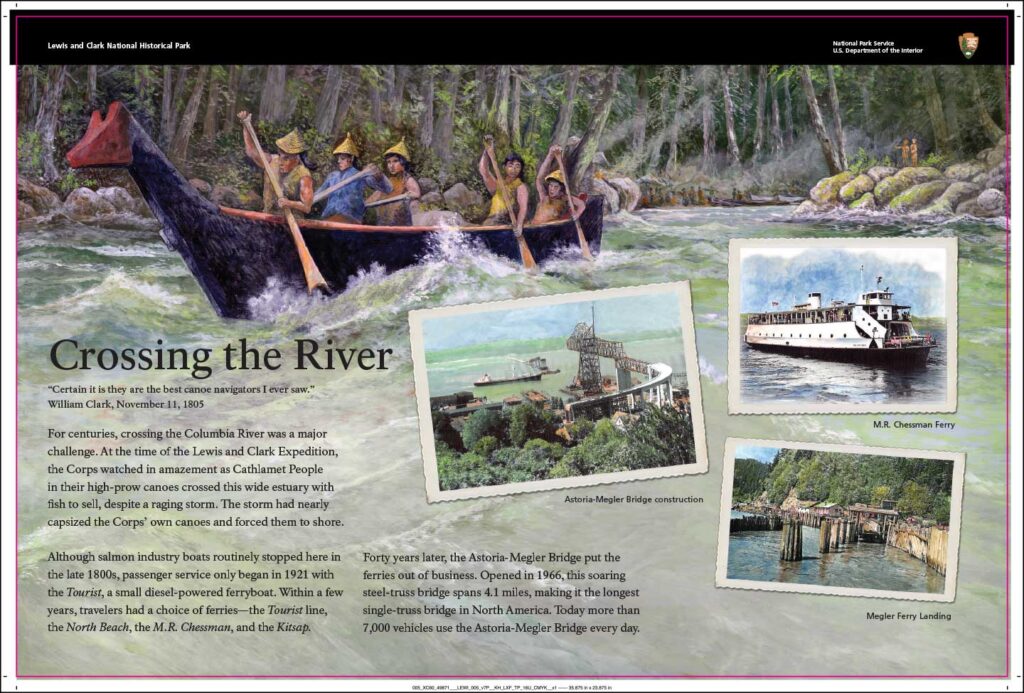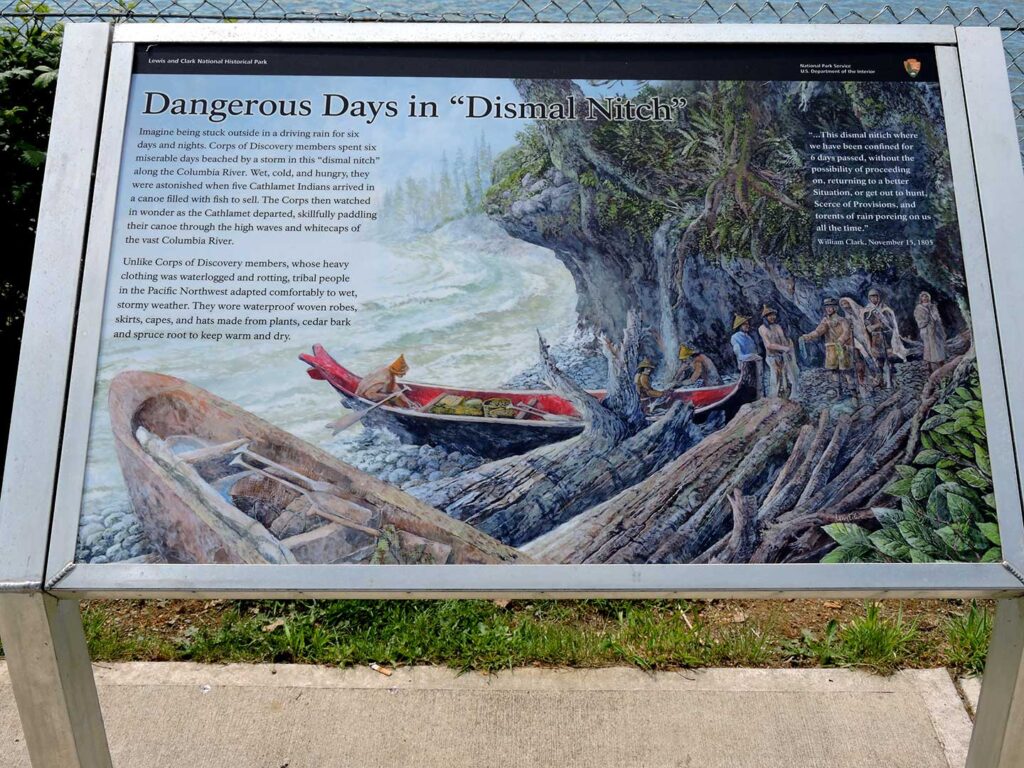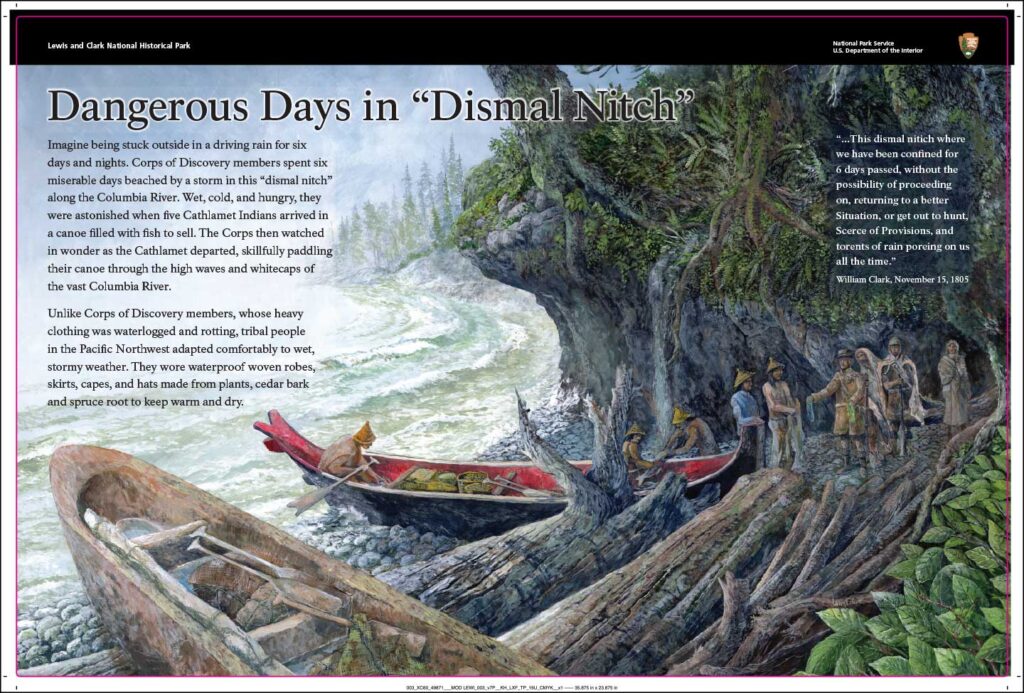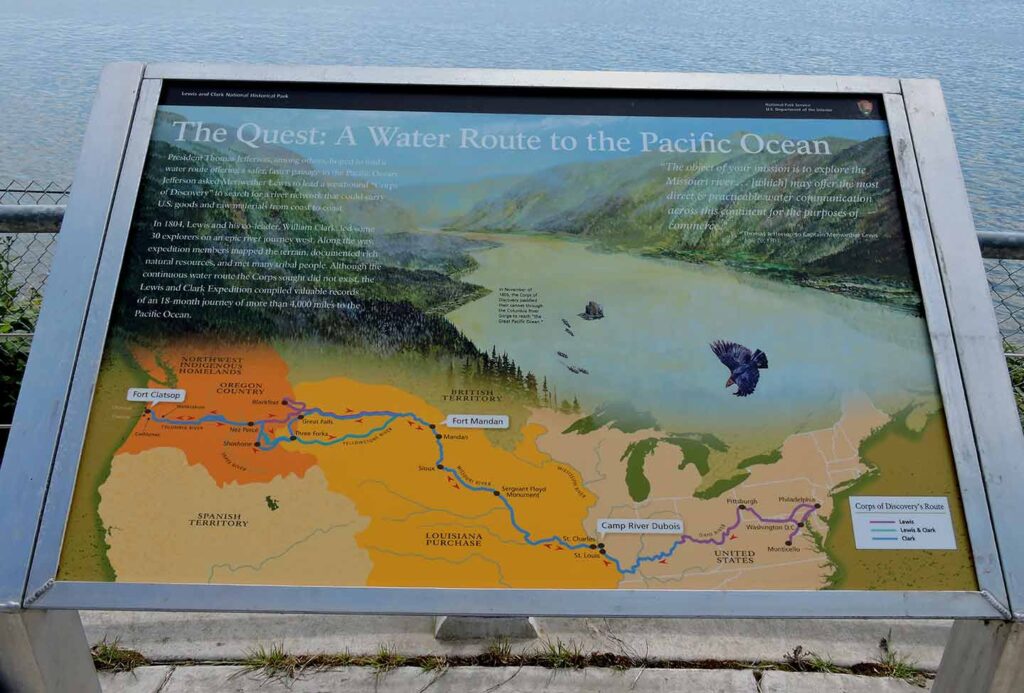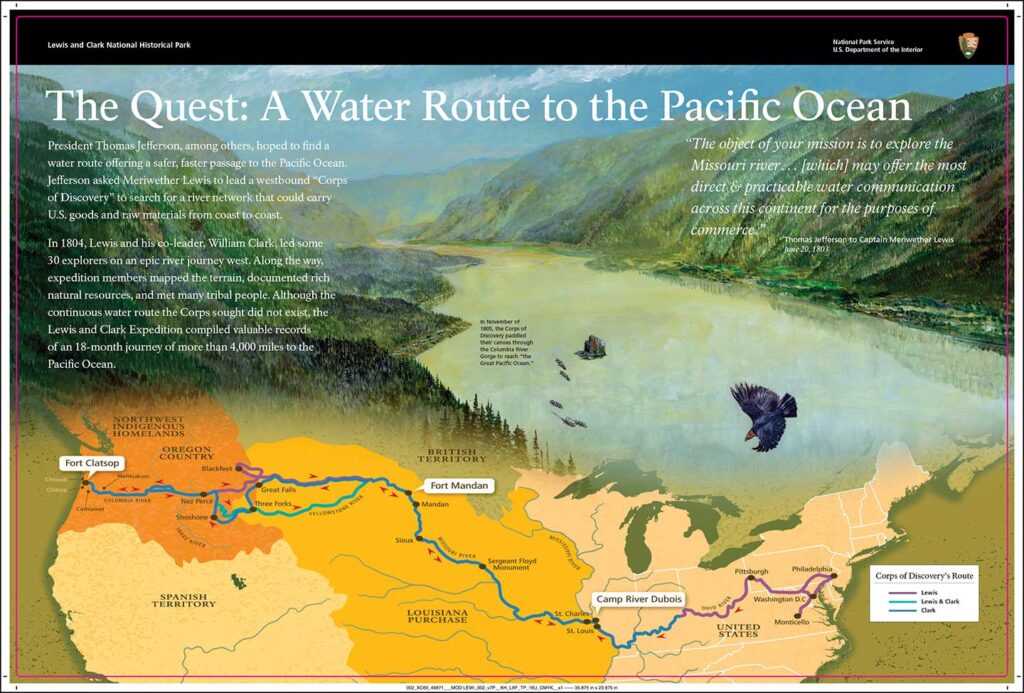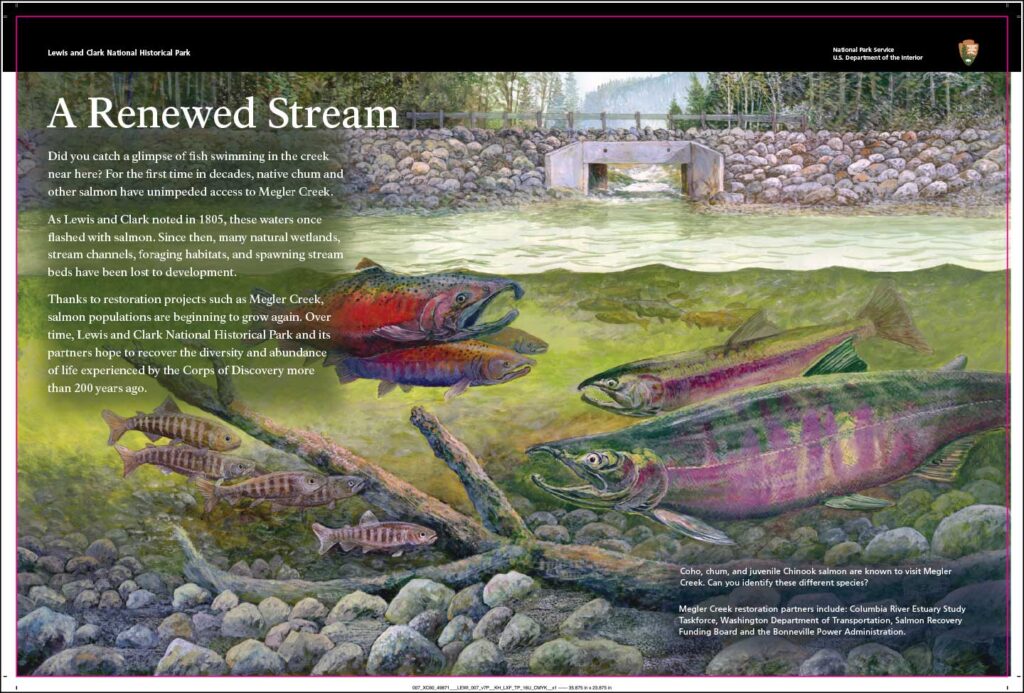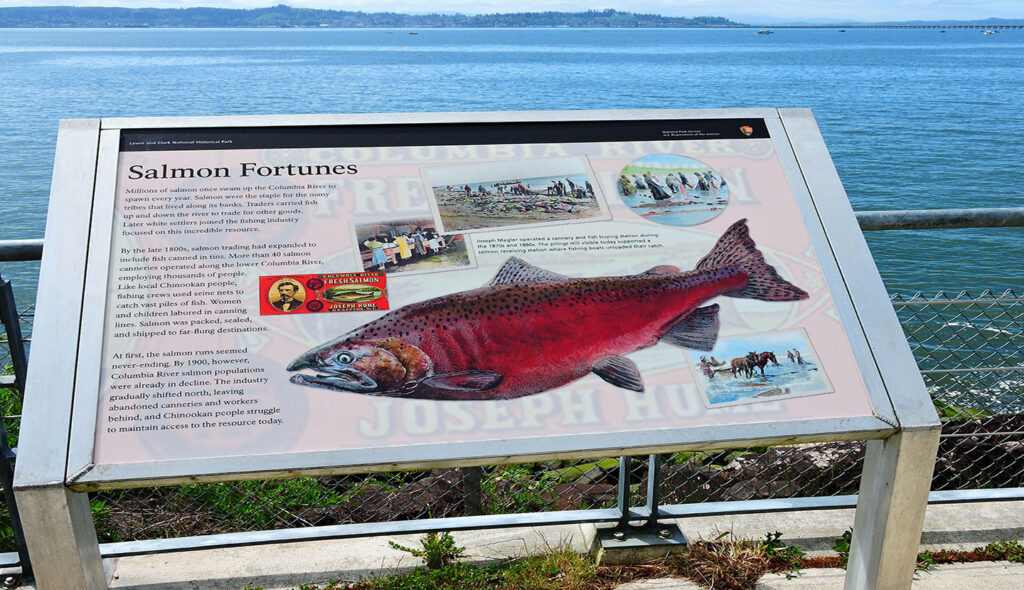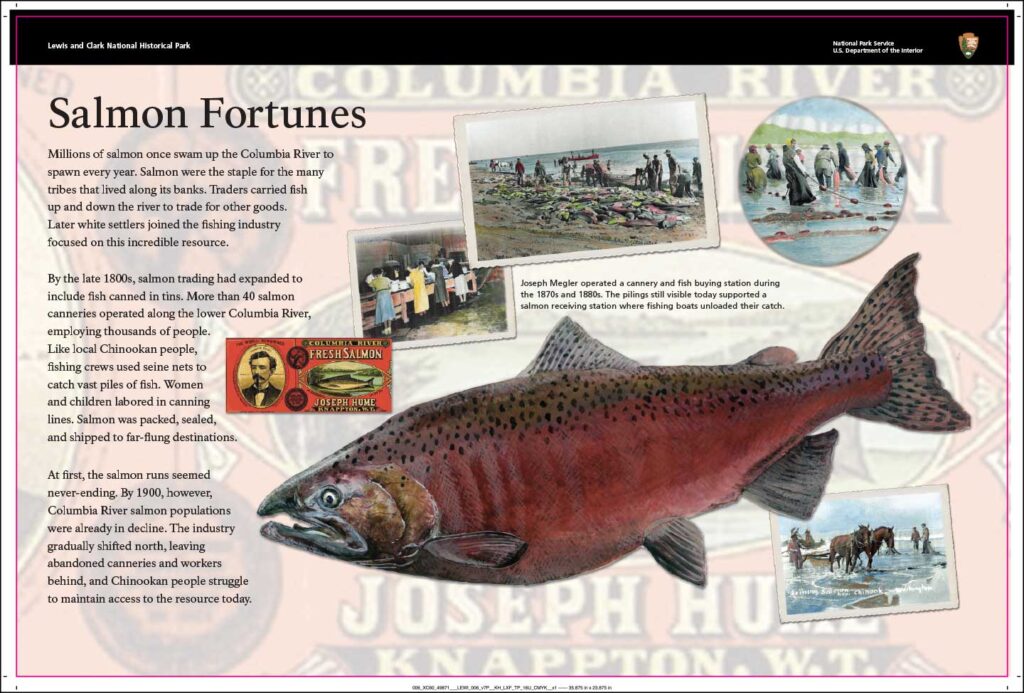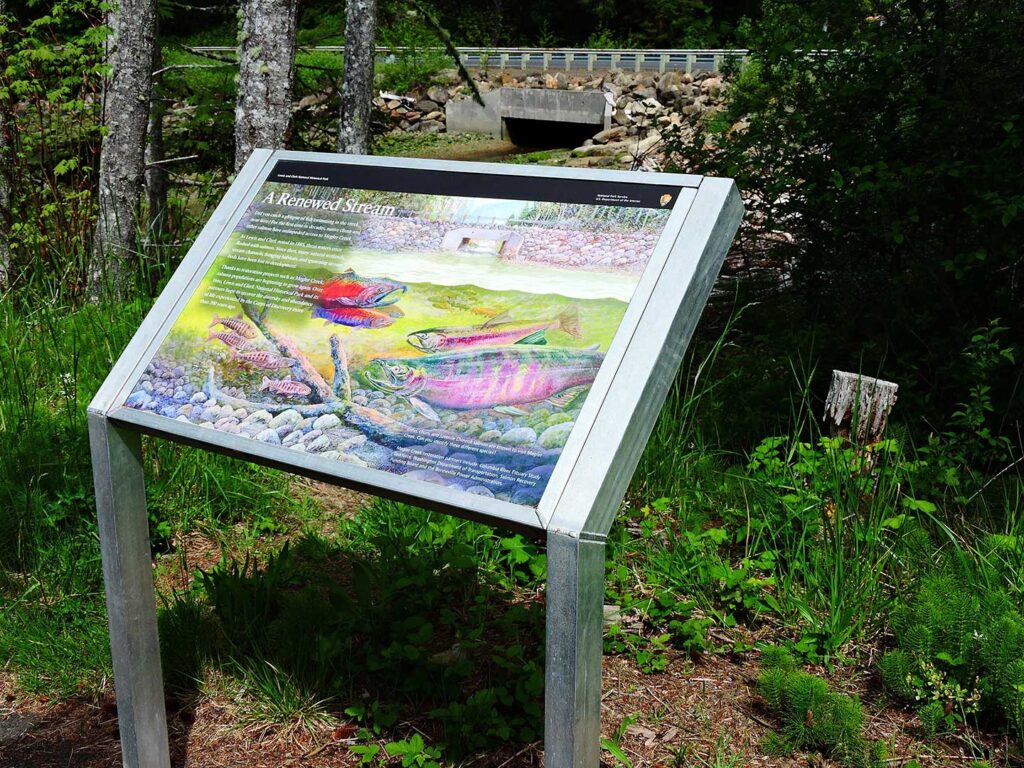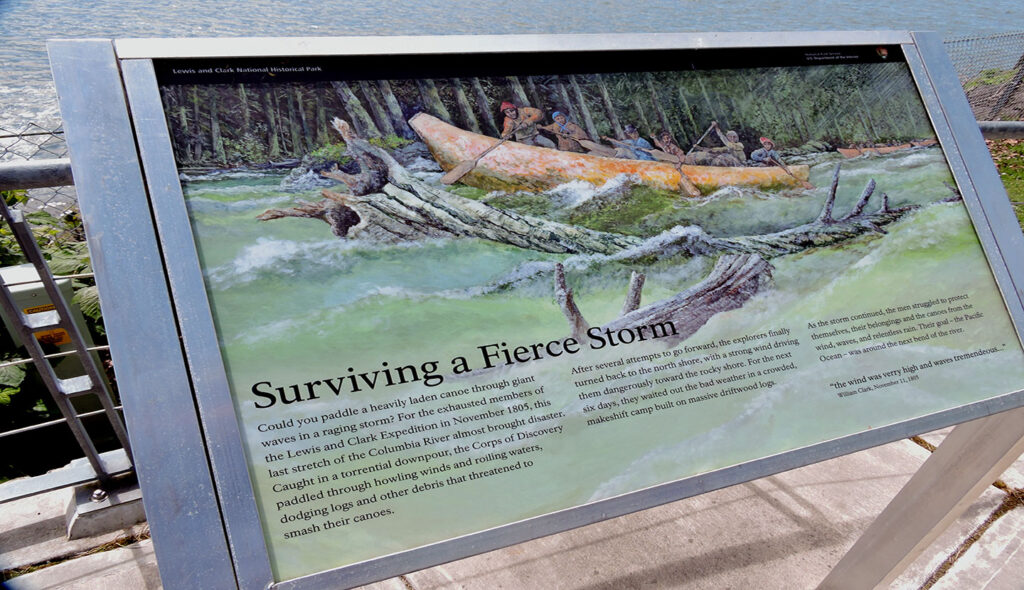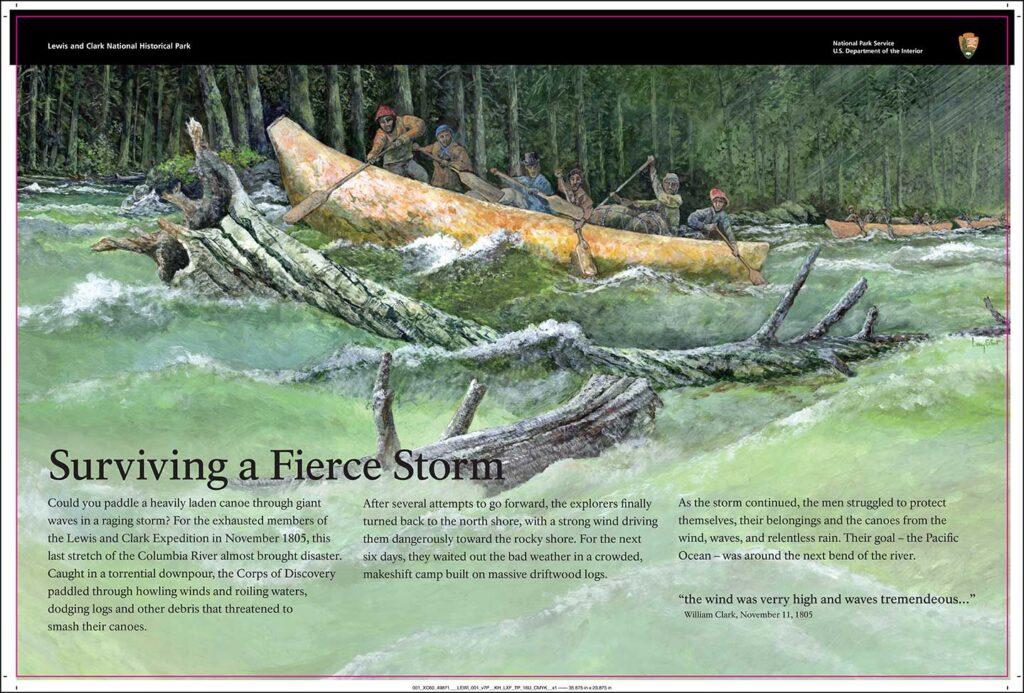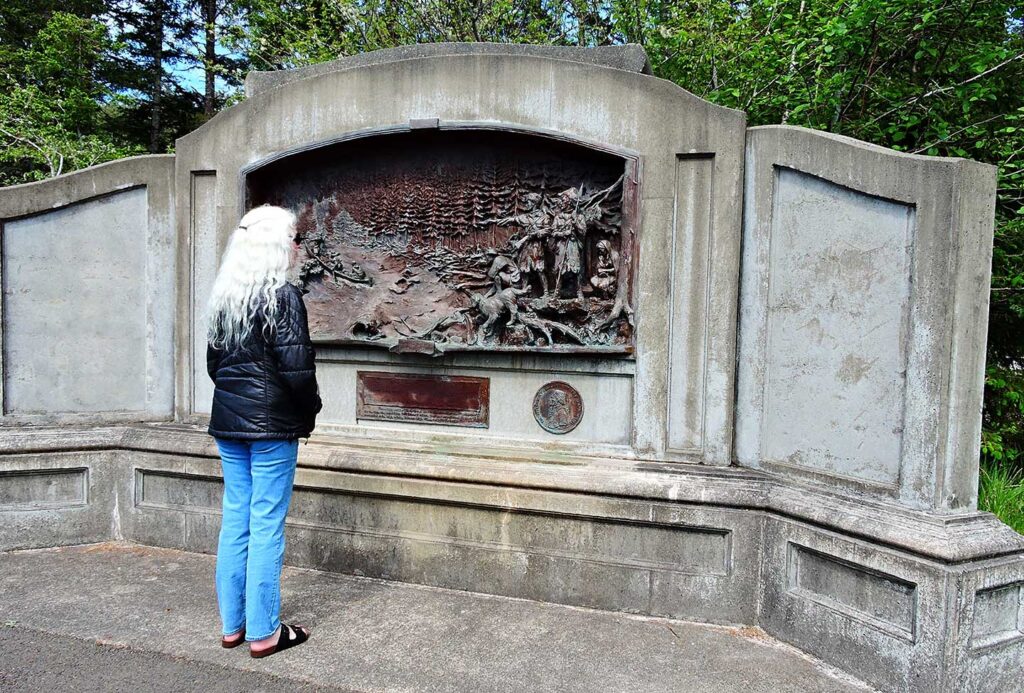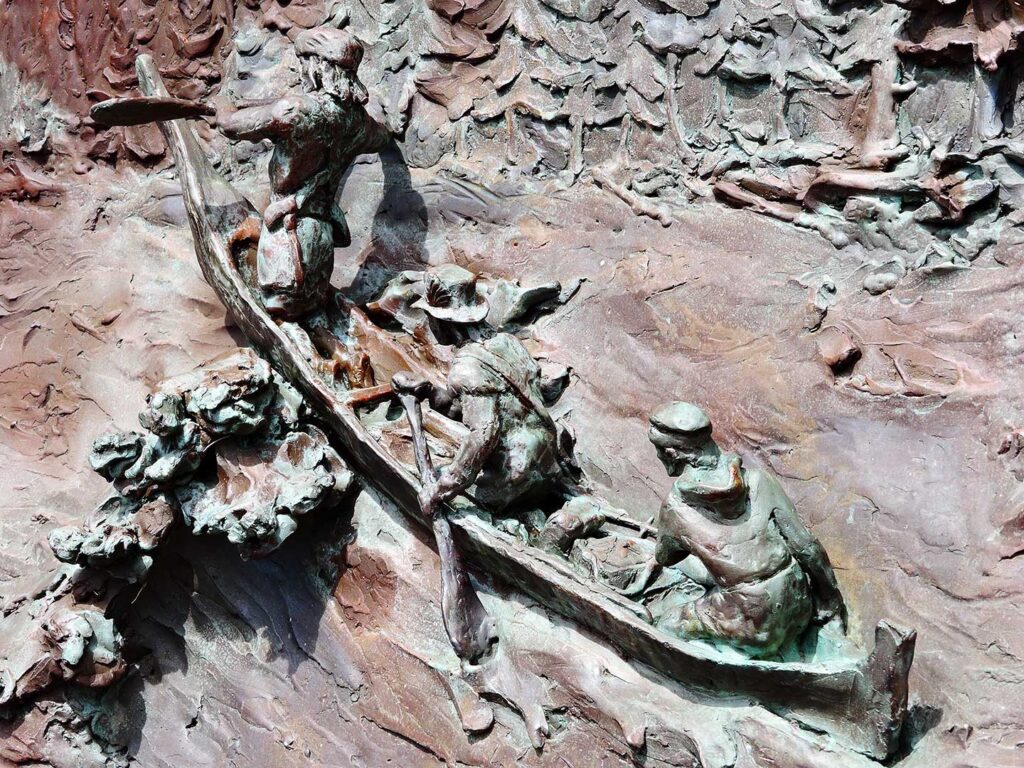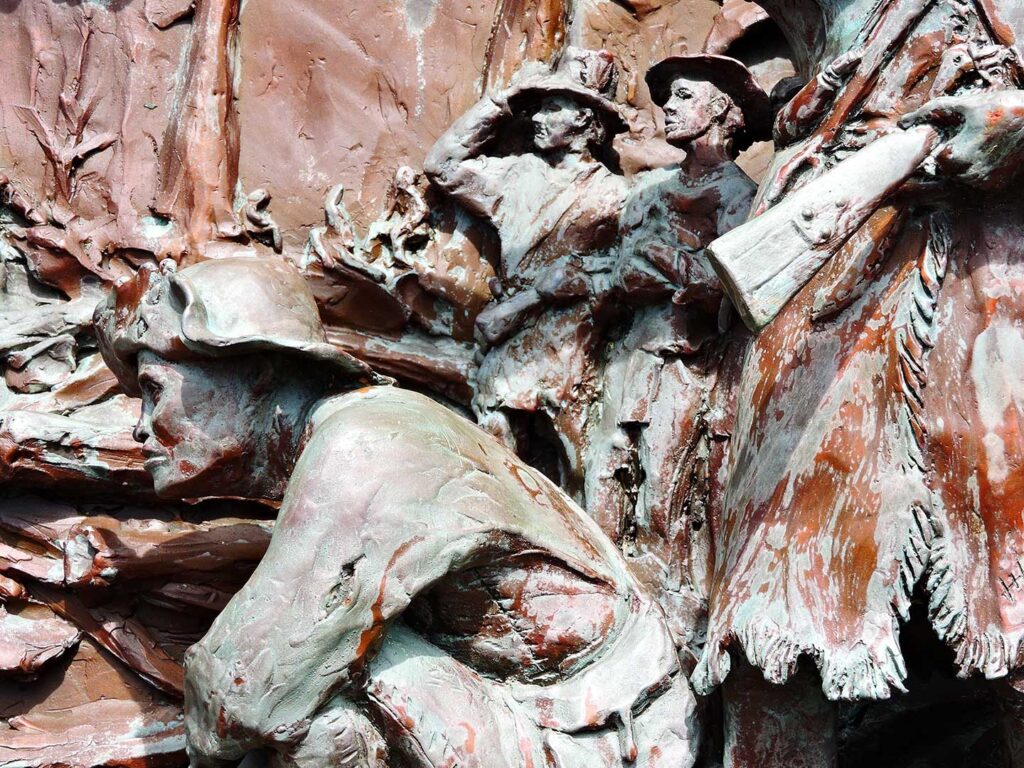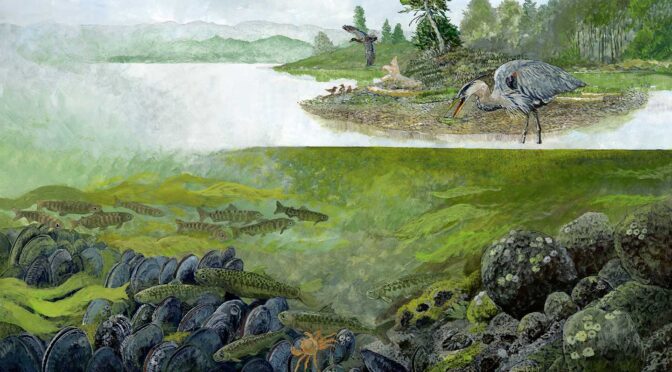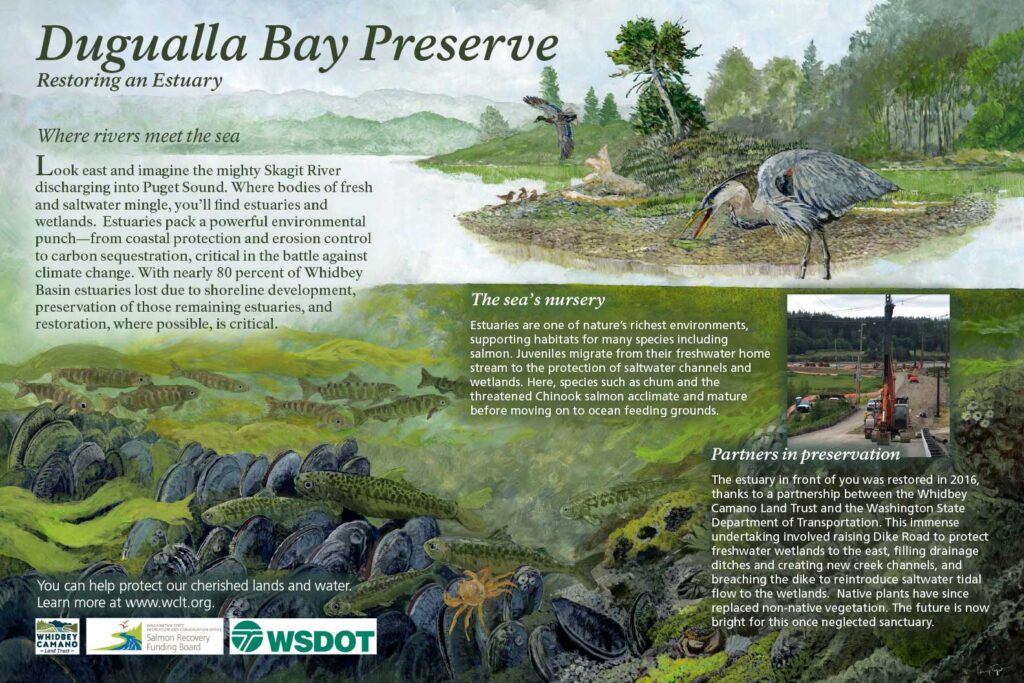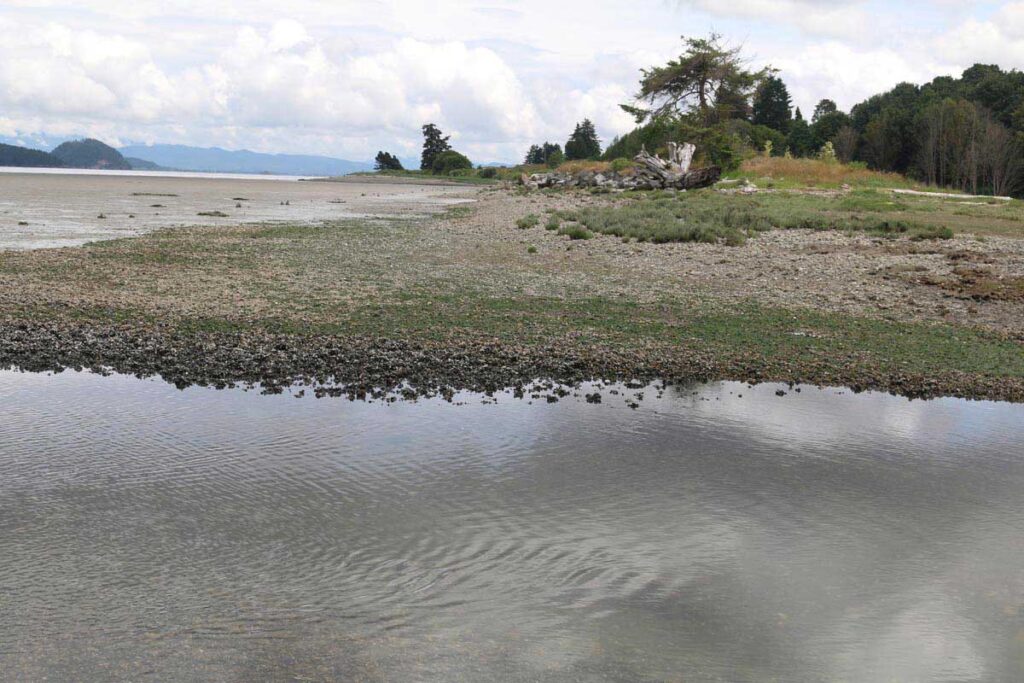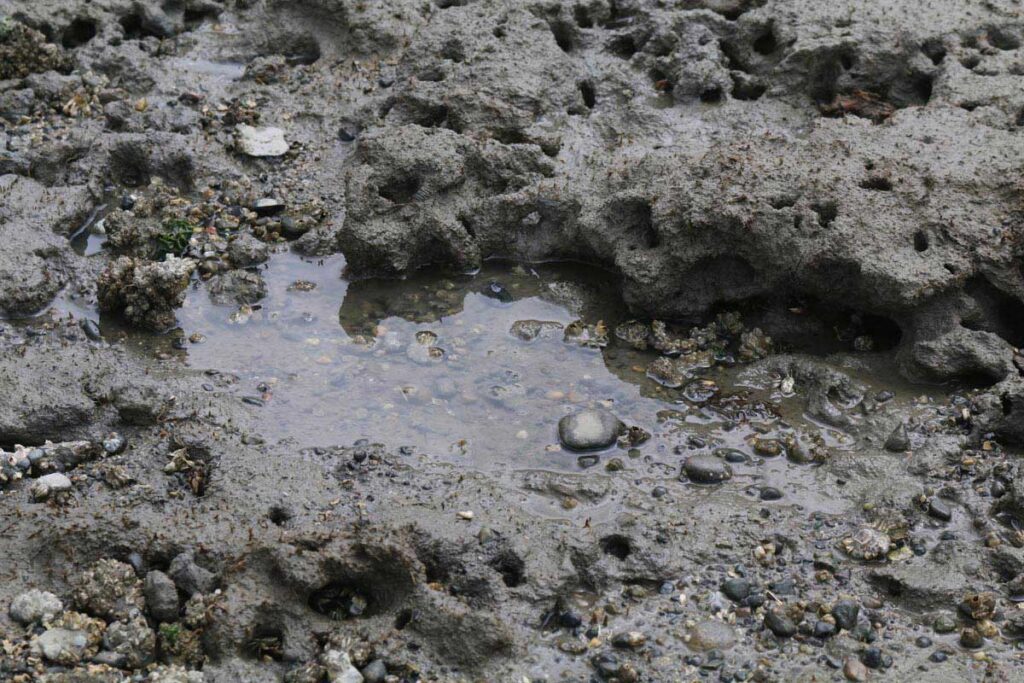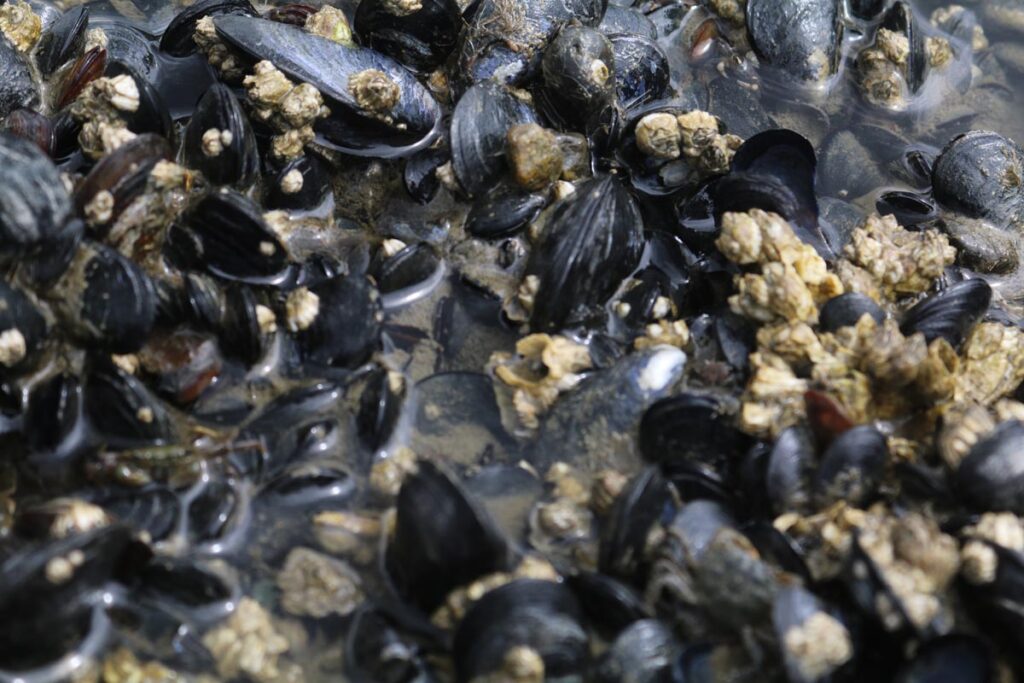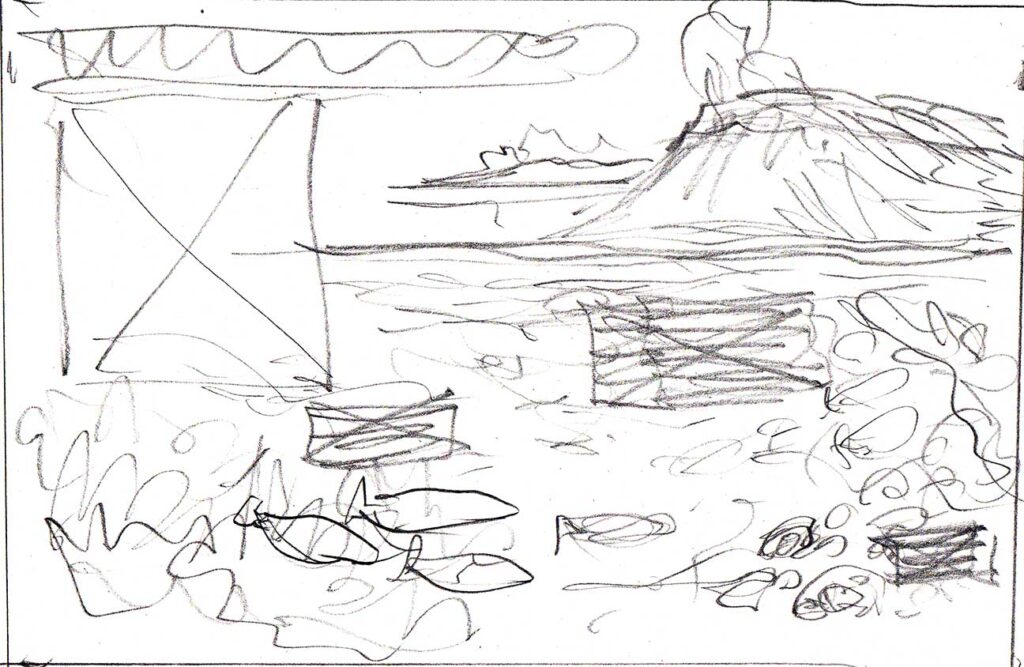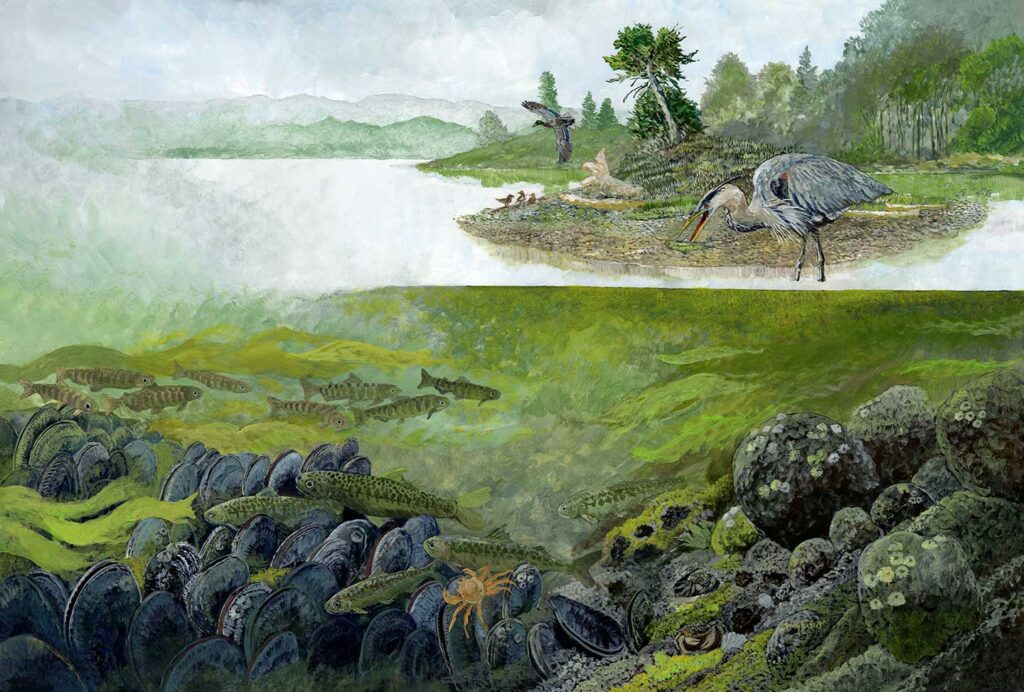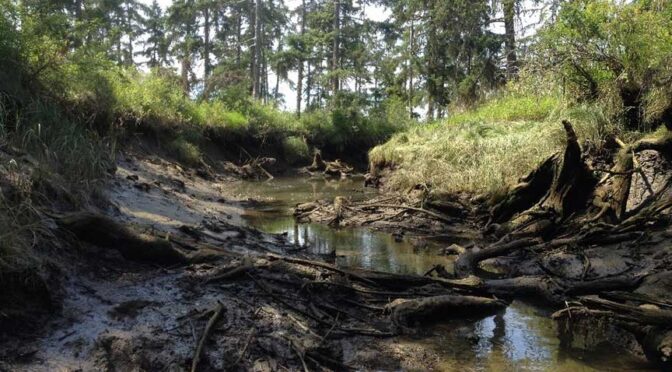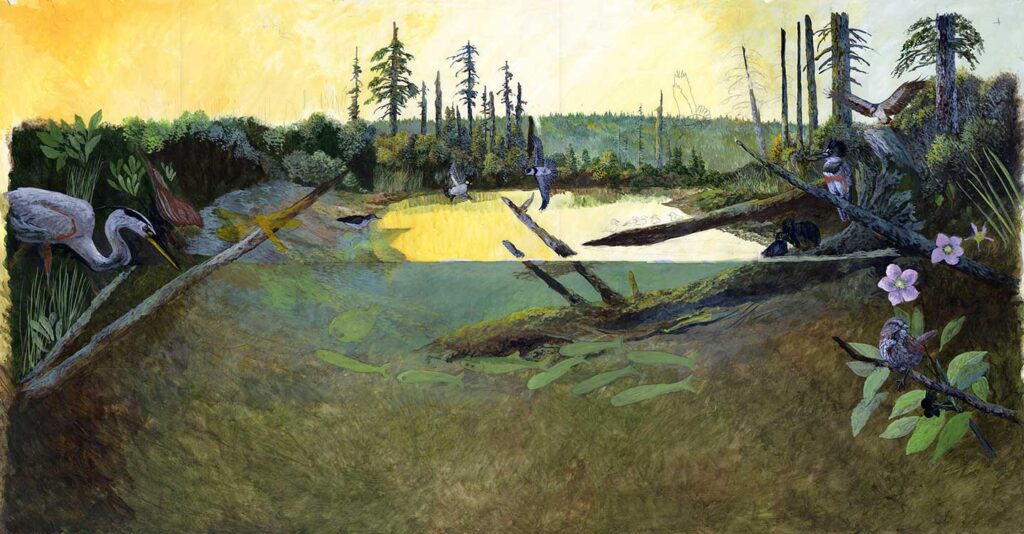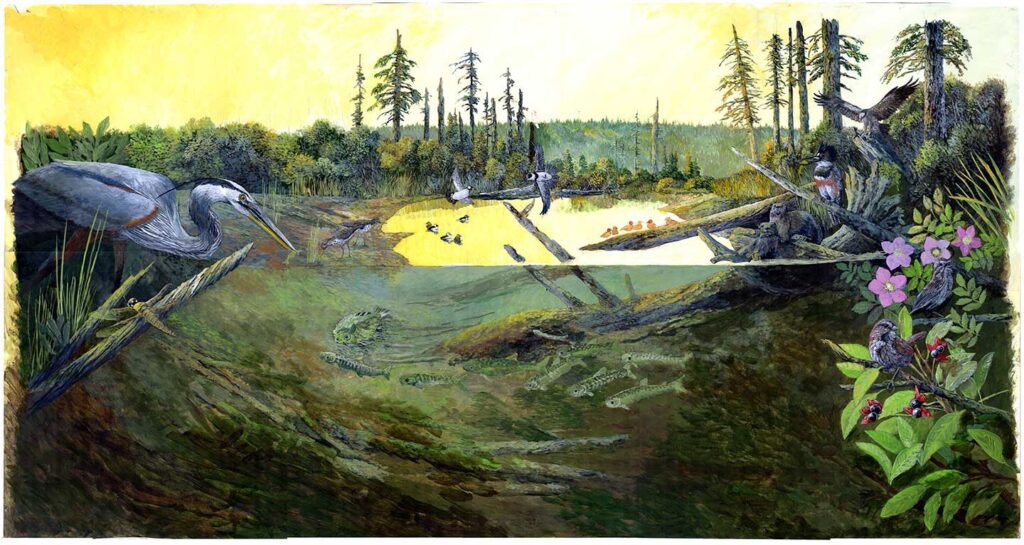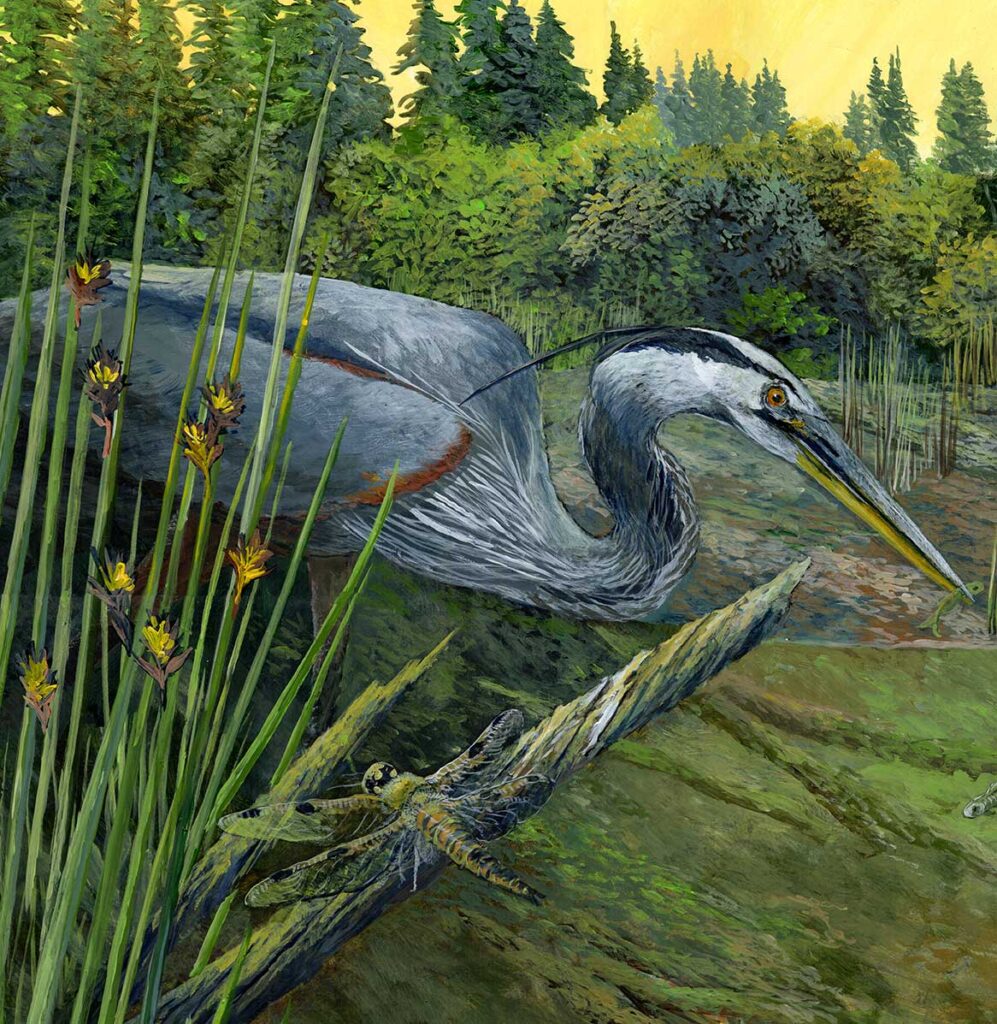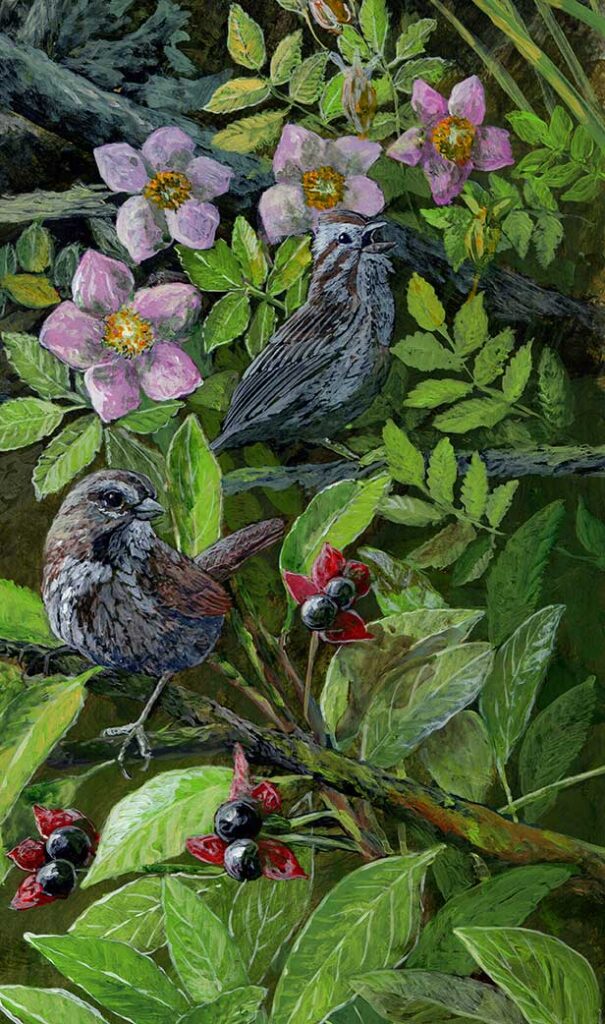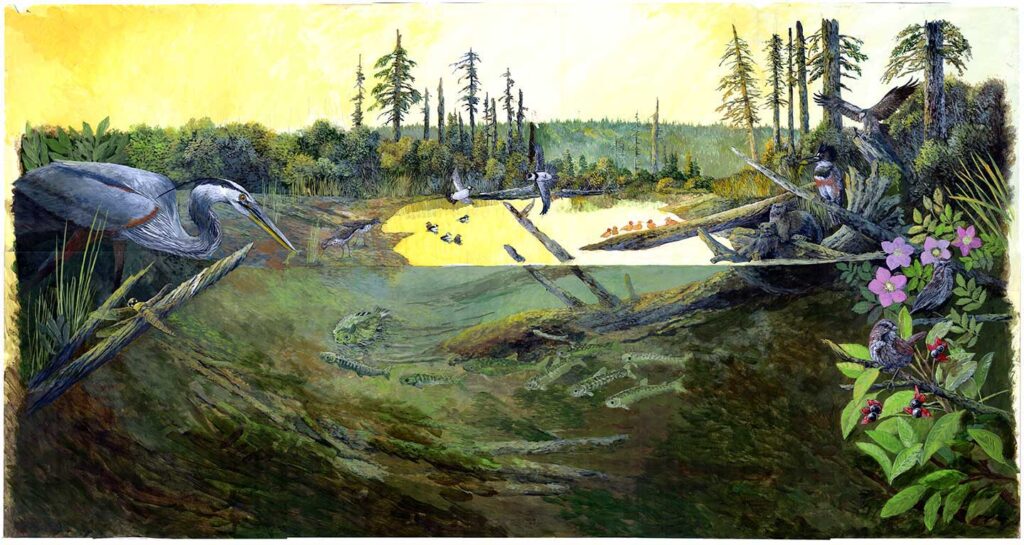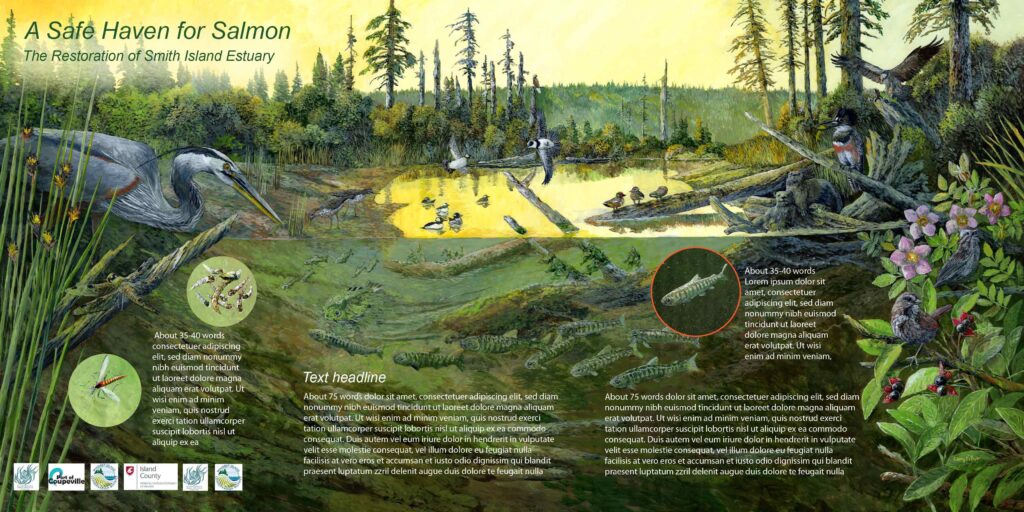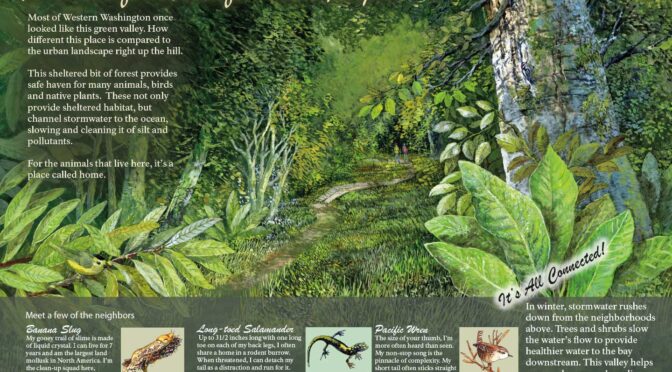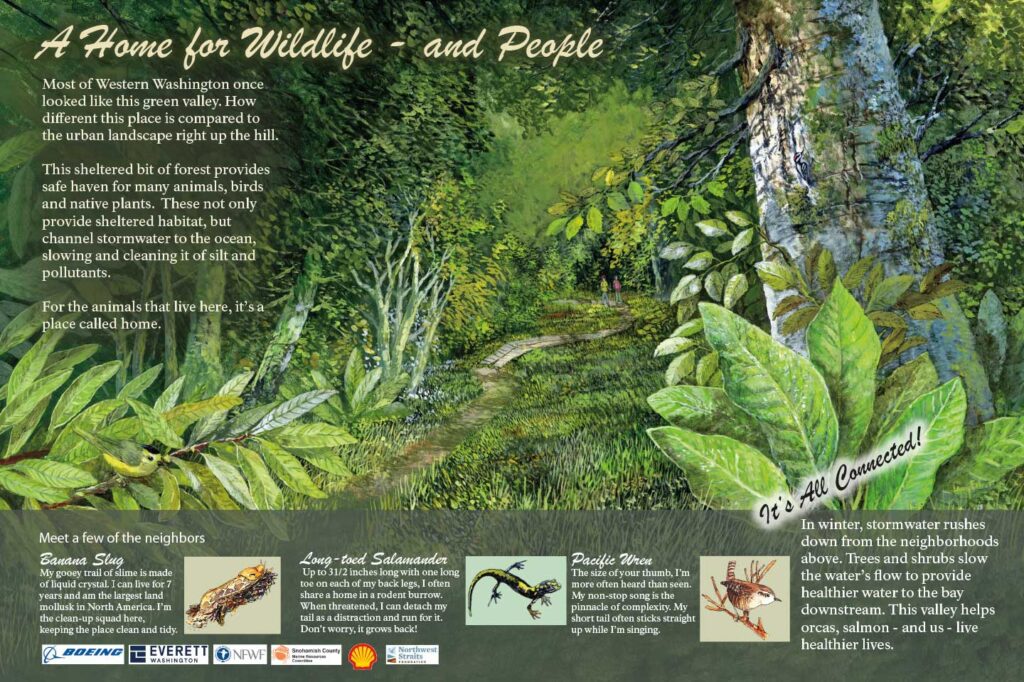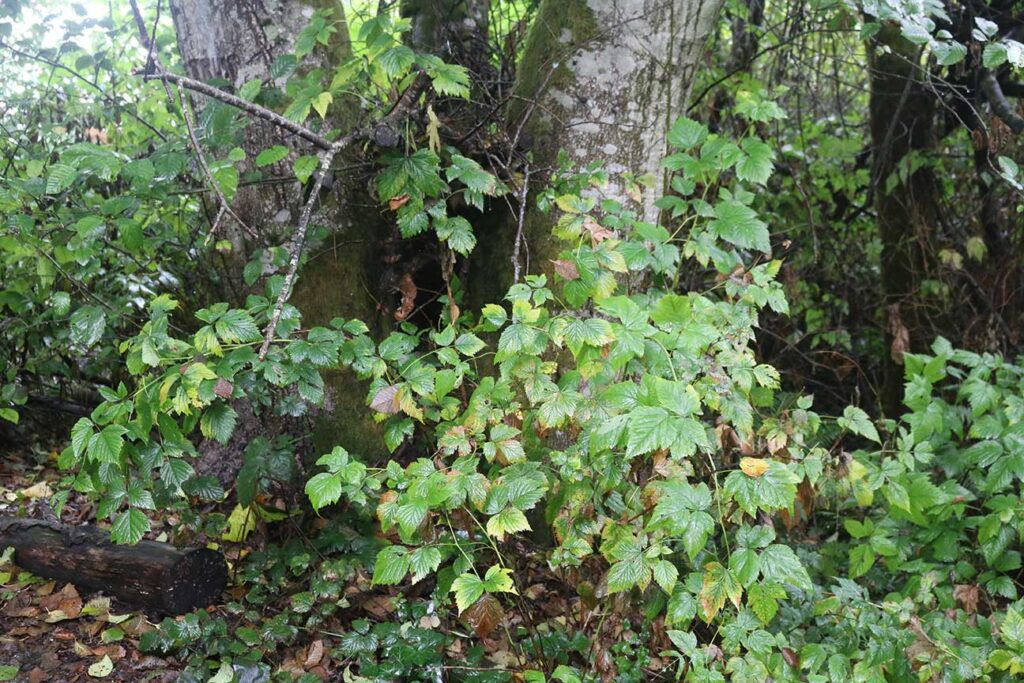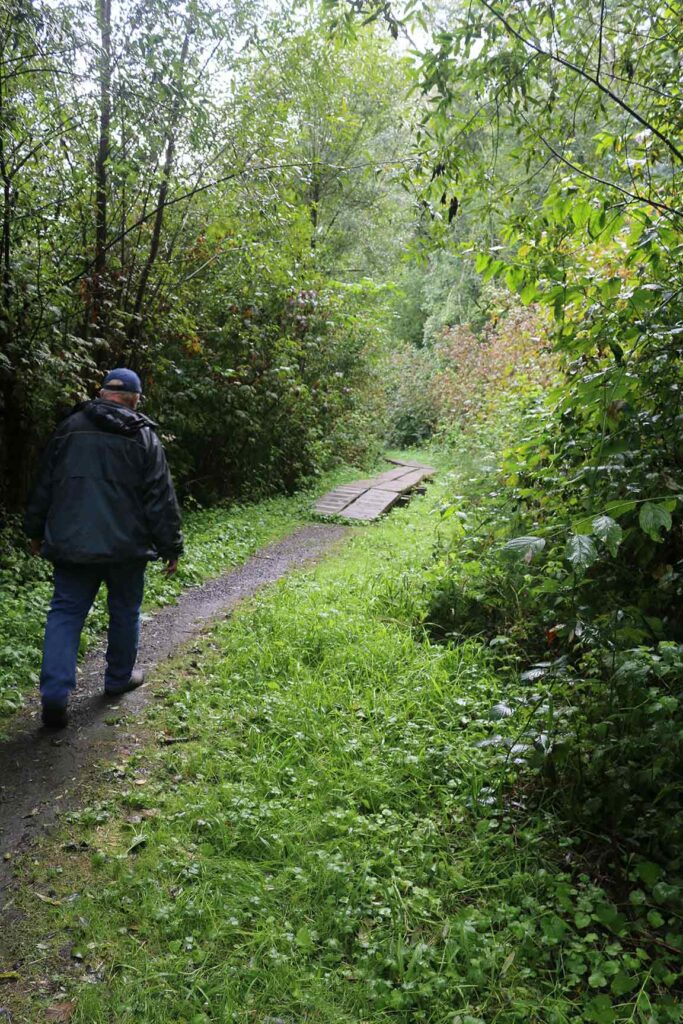This is a long post, lots of photos, but I wanted to document this. In 2019, I was commissioned to do a series of paintings for the Dismal Nitch unit of Lewis and Clark National Park at the mouth of the Columbia River. Astoria is just across the river, the huge Megler Bridge is just to the west. We were recently there and I took some photos of the installation, along with a big bronze sculpture that’s there as well.
This is the spot where the Corps of Discovery, fighting a stormy southerly with huge waves and rain, hunkered down for days. Aptly named, Dismal Nitch, it really is just that, a little nitch in the cliffs. Giant logs were banging together, they were almost out of food, soaked and cold. Their quest, the Pacific Ocean was almost in view, but here they were fighting for their lives.
This is an important place in America’s history, just before Lewis and Clark connected our country together, east and west, in early November of 1805.
Just prior to me in 2008, artists Gareth Curtiss and Bill Clearman installed this 6′ x 4′ bronze at the site, and I fell gratified to have my stuff in the same location. It’s a stunning bit of lost wax casting. My part of this was the design and illustrations of the wayside. Giving credit also to Rosene Creative from Georgia handled the top end of it, Faye Goolrick of Atlanta did the text and Eric Kittelberger from Cleveland did the final maps. It’s how these projects go, a nationwide effort.
To make this project even sweeter to me, in 1963, my mom published a book about Lewis and Clark and The Corp or Discovery for Dodd Mead in New York, 1962. It’s the story of the Corps and all the wildlife and botany they discovered – almost daily – on their three-year journey. And here I was, a half-century later, painting the same story.
Thanks for reading this week. You can sign up for emails for these posts on my website at larryeifert.com.
Larry Eifert
Here’s my Facebook fan page. I post lots of other stuff there.
Click here to go to our main website – with jigsaw puzzles, prints, interpretive portfolios and lots of other stuff.
Nancy’s web portfolio of stunning photography and paintings.
And here to go to Virginia Eifert’s website.
